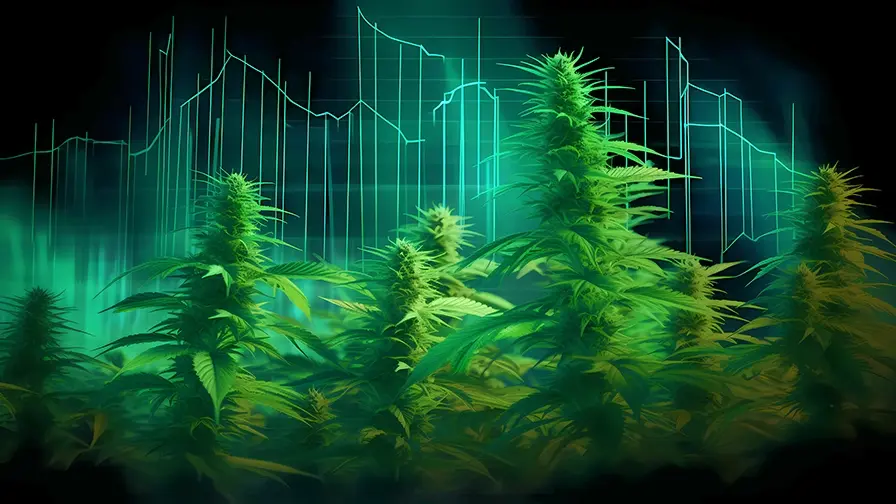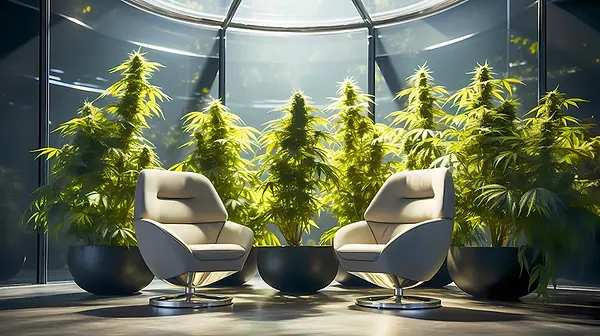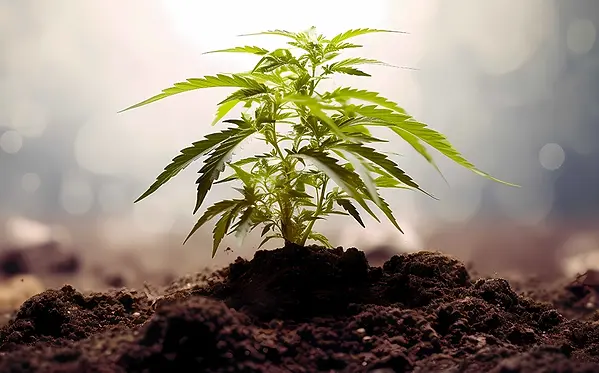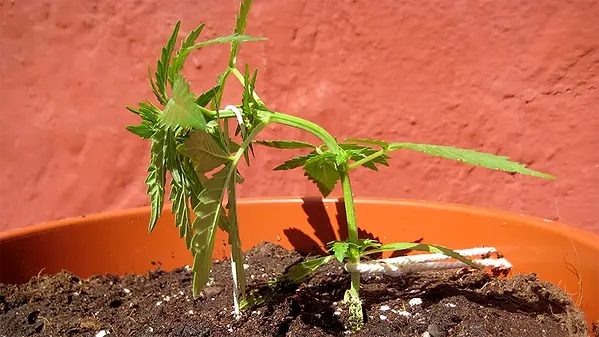
Teddys Cannabis Blog
How do you get the best possible yield from your cannabis plant?

Cannabis cultivators have faced a challenging journey, from facing criticism for growing their favorite plant to exploring business opportunities in the fastest-growing industry. Each grower has a unique story to tell.
At the end of the day, most cultivators share a common goal: maximizing their yields. However, there's more to it than just financial motivation. It's about striving for top quality, exploring therapeutic potential, and the pure satisfaction of achieving something most people wouldn't even dare to dream of. Even for recreational users, having a stash of high-quality cannabis means enjoyable evenings filled with joy and laughter.
As cannabis cultivators, we are constantly seeking ways to get the best out of our cannabis plants. To achieve this goal, we are willing to take the necessary measures. For those new to cannabis cultivation or seeking new ideas, the question arises: What should I try? The internet offers many pieces of advice, some promising success and others not. Instead of relying solely on them, it's time to focus on the most effective methods to maximize the yield of your cannabis plants.
There are some key points. First, you must provide your plant with the optimal environment and the best lighting conditions for it to thrive. Second, it's crucial to stimulate your cannabis plants, similar to how a coach motivates their athletes. Sometimes, this requires a certain firmness towards the plant, but by following these steps, you can significantly boost growth.
Here are three methods to maximize the yield of your cannabis plants.
Creating an Optimal Growth Environment

Before starting the planning process, it is crucial to thoroughly consider the ideal growth environment if you want to successfully cultivate cannabis. This step should precede the consideration of purchasing equipment, seeds, and the like, as the success of cultivation heavily depends on the conditions under which the plants are to thrive.
-
Indoor Cultivation: When cultivating cannabis indoors, there is a unique opportunity to precisely control all environmental variables. Starting from exact regulation of light cycles to meticulous control of temperature and humidity, indoor cultivation opens up the possibility of year-round gardening. This is particularly beneficial in regions with extreme climatic conditions where outdoor cultivation options may be limited. Despite these advantages, it is crucial to consider various factors such as budget and available space to create an efficient and sustainable indoor cultivation solution.
-
Outdoor Cultivation: Opting for outdoor cannabis cultivation provides the invaluable advantage of natural sunlight but requires careful consideration of pros and cons. If you choose outdoor cultivation, you face the challenge that cultivation possibilities strongly depend on climatic conditions. Despite the cost-effective option of outdoor cultivation, it is important to note that the cultivation period is limited, as weather conditions are uncontrollable.
The choice between indoor and outdoor cultivation is a fundamental decision that requires careful consideration of various factors. Besides the financial aspects affecting the budget, climatic conditions also play a central role. Additionally, it is essential to consider the available space to ensure that the chosen cultivation method is both efficient and sustainable. Ultimately, the decision to cultivate indoors or outdoors is a key decision that requires a comprehensive assessment of individual circumstances.
Genetics

After determining where you want to cultivate, the next focus is on selecting the genetics. In cannabis cultivation, the balance between natural traits and selective breeding plays a crucial role. The genetic composition of a cannabis strain significantly influences the plant's success, much like in humans. You can take intensive care of fitness, nutrition, and good habits, but if genetics aren't favorable, options are limited.
Choosing the right genetics significantly impacts the yield, quality, and overall outcome of your harvest. Think of genetics as the DNA blueprint guiding the plant's life cycle and determining how it grows.
For growers, understanding these genetic factors is essential to get the best from their plants. Different strains exhibit tendencies in plant structure, branching patterns, and overall size. Some strains tend to grow into imposing plants, while others become tall and slender.
There are strains that spread horizontally, forming a dense canopy of leaves, while others have an open structure with ample space between nodes. If you want a plant that produces many trichomes, selecting a strain tailored for that purpose is crucial. Similarly, look for strains whose genetics tend to promote relaxing effects and stress relief if that is your goal.
The genetic composition of a cannabis strain plays a crucial role in all decisions. For instance, if you want to grow outdoors, choosing a compact and bushy strain that might thrive better in an indoor cultivation space would be unwise. Even if you take all possible measures for the plant's well-being, it could still fall short of expectations if its genetic predisposition is not suitable for lush growth and high yields. Similarly, a grower aiming for discreet cultivation will struggle to accommodate a tall plant in their grow tent.
The overall height and volume of a plant are closely linked to its genetic predisposition. For example, indica-dominant strains tend to be more compact, making them suitable for indoor cultivation, especially when vertical space is limited. Sativas, on the other hand, are better suited for outdoor cultivation, where they have the opportunity to grow tall and high.
It is essential to choose strains with the potential for high yields if that is your goal. When searching for a suitable strain, it is crucial to carefully examine the strain's origins. This provides insights into its breeding history and other features that can help maximize the plant's full potential. Information on whether the plant is easily trainable, its preferred light conditions, and other relevant details are crucial for achieving optimal yields.
Selecting the right genetics marks the starting point, but it's only the first step and by no means the end of the challenge. It is still necessary to care for the plant and provide it with everything it needs. However, by taking this initial step in the right direction, you have already completed half the work and paved the way for potentially high yields.
Training the Cannabis Plant

An extremely effective method to increase the yield of your own cannabis plant is through training. Essentially, training the cannabis plant involves influencing its growth and shape to achieve optimal yield enhancement.
Some training approaches include selectively removing unnecessary branches and leaves, allowing the plant to concentrate its energy on branches that will later develop buds. This promotes more efficient bud development during the flowering phase.
Training the cannabis plant has various benefits. For instance, it ensures that the plant's branches do not bend or break under the weight of buds, which is particularly important for strains that tend to develop large buds.
Moreover, training is a cost-effective – often free – method to boost the yield of the cannabis plant. It ensures that the plant does not outgrow the available space and can even help keep it discreet and hidden from prying eyes.
Below are some of the most effective training methods you can apply.
-
Low-Stress Training (LST): In LST, the branches of the cannabis plant are gently bent to create an even canopy of leaves, improving access to light and air. This stress-free method allows for quick recovery and is suitable for beginners. It's important to use soft garden ties instead of metal wires and plan the technique to create an even canopy without overlapping branches.
-
Pruning: Pruning is a common technique after LST, where selectively unnecessary plant parts are removed to improve light and air circulation. Low branches, which often lead to popcorn buds, are pruned to enhance nutrient uptake. Careful use of sterilized tools is crucial, and the cut should not exceed 60% of plant growth to avoid stress-related issues.
-
Topping: Topping involves cutting off the main cola of the cannabis plant to promote the development of two main colas and interrupt apical dominance. This method reduces the height of the plant but requires careful hygiene, the use of a sterile pruning shear, and clean cuts. Topping is done when the plant has 5 to 6 nodes, with a recovery time of more than a week.
-
Supercropping: An advanced method under strong stress, where the grower gently damages the inner cell walls of the branches without breaking them. Supercropping triggers a defense reaction that strengthens the damaged area and potentially increases yield. It should be done until the last week of growth, with one week available for proper recovery.
-
Screen of Green (ScrOG): In this advanced technique similar to the LST method, a screen is placed over the plant's canopy, guiding the branches through it to create an even canopy. This method takes about six weeks and is recommended for plants with a long vegetative period. The use of an adjustable screen facilitates management during the plant's growth.
Summary:
Cannabis growers aim for maximum yields and quality, both for medical and recreational purposes. The cultivation site (indoor or outdoor), genetics, and proper training play crucial roles. Methods like Topping, Supercropping, and ScrOG are applied to achieve optimal results. The choice between indoor and outdoor depends on budget and space, while genetics lay the foundation. Training, such as Low-Stress Training and Pruning, is crucial for higher yields. Careful care and the application of advanced techniques influence the success of cannabis cultivation.
To learn more



